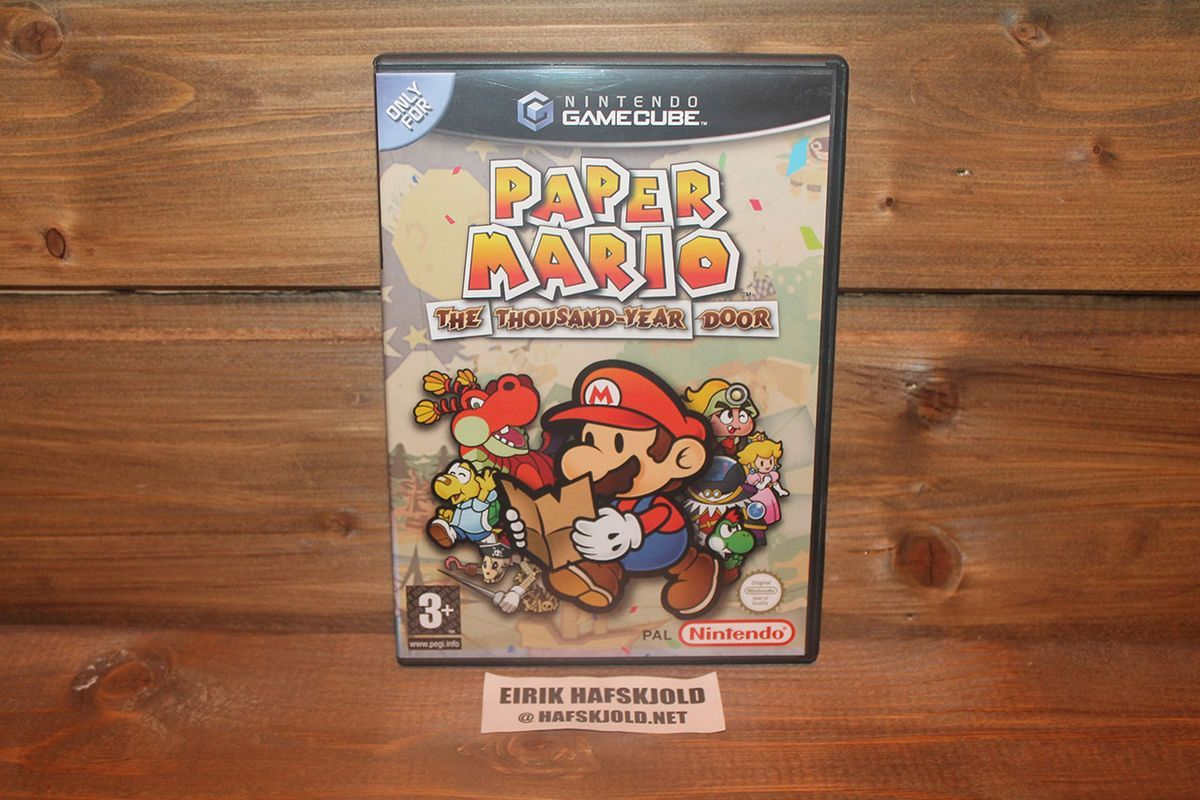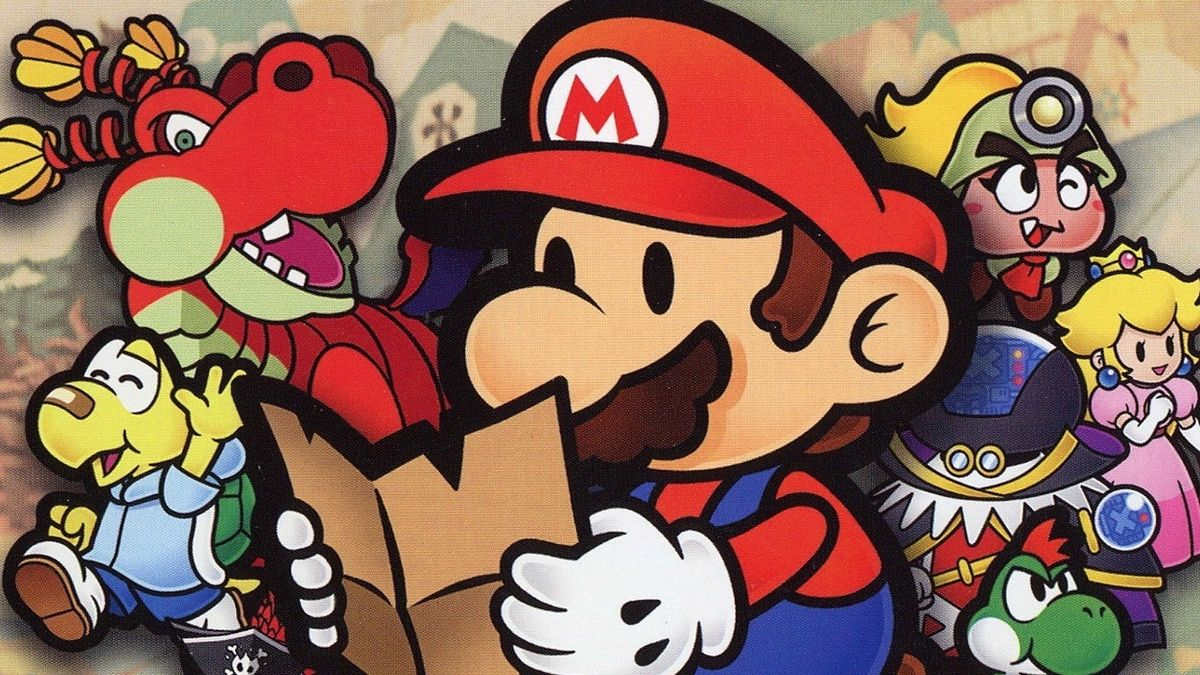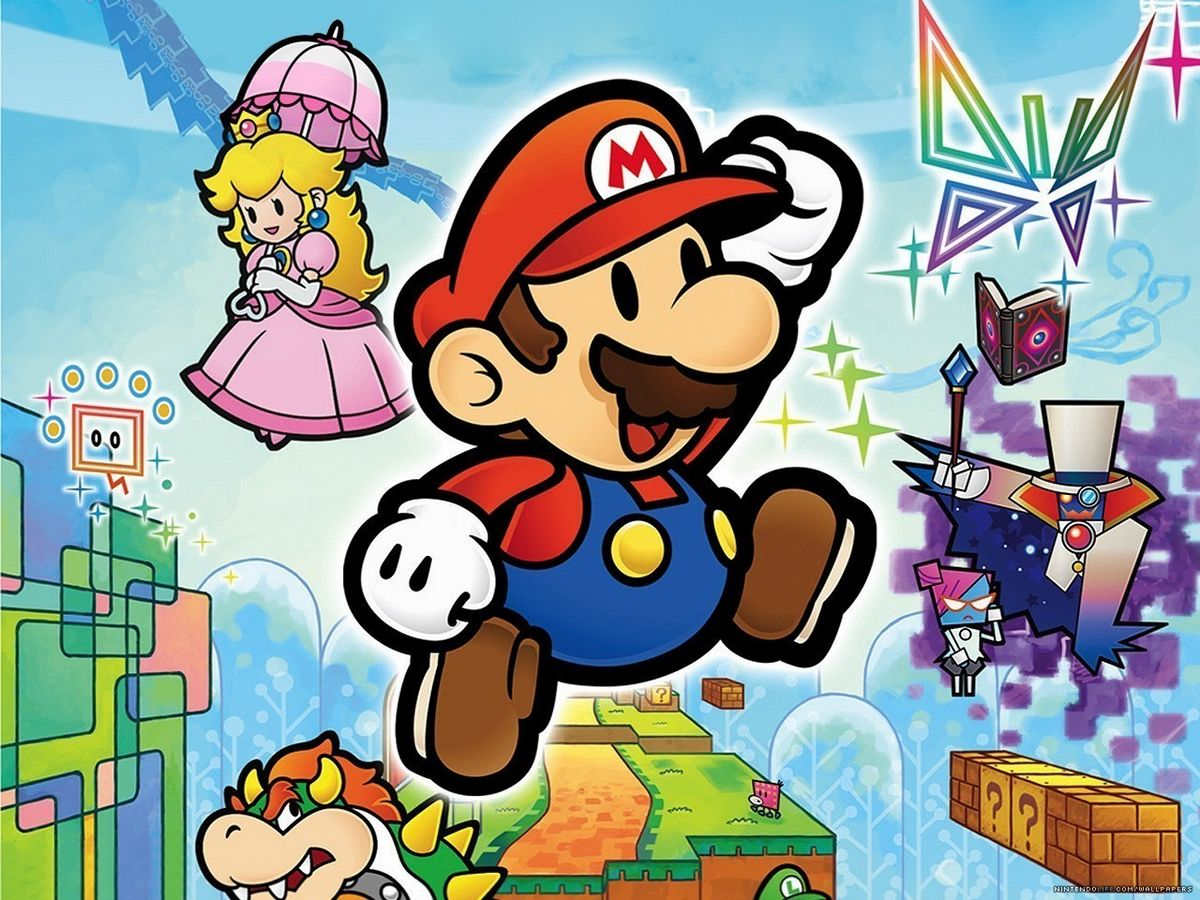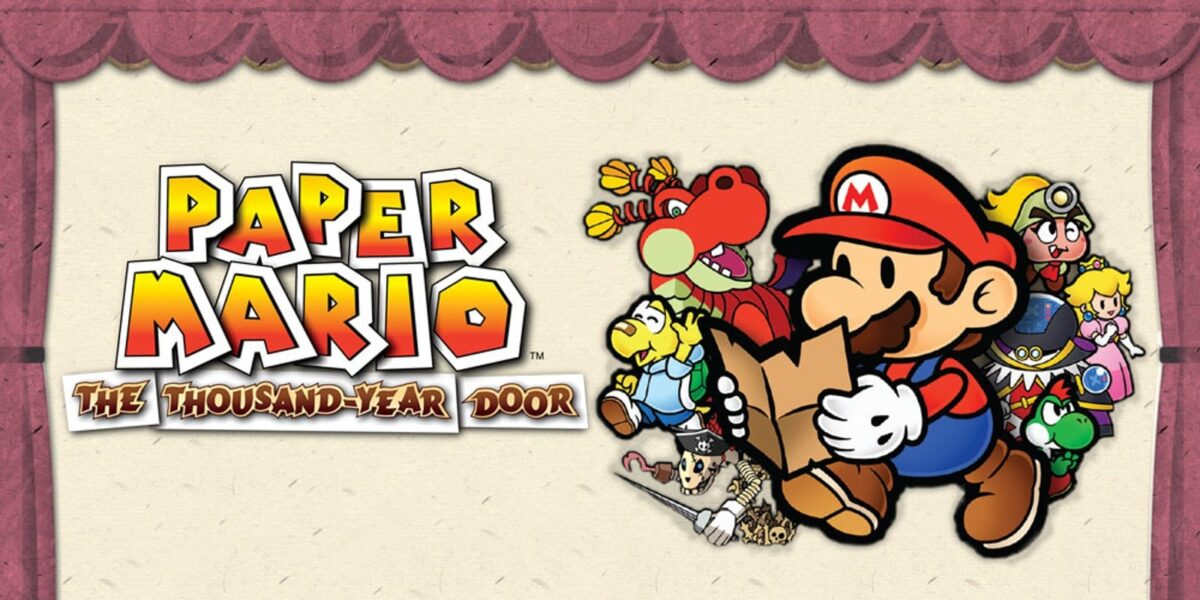Paper Mario: The Thousand-Year Door is an iconic video game that was released in 2004 by Nintendo for the GameCube console. It is a role-playing game that features Mario, the beloved mascot of Nintendo, on a quest to rescue Princess Peach and uncover the secrets of an ancient treasure known as the Crystal Stars. What sets this game apart from other Mario titles is its unique paper-themed art style and gameplay mechanics that blend turn-based battles with puzzle-solving elements.
The Paper Mario franchise has always been praised for its clever writing, charming characters, and engaging storytelling. The Thousand-Year Door takes these strengths to new heights by introducing memorable locations like Rogueport, Glitzville, and the Pit of 100 Trials. Each area has its own distinct personality and challenges for players to overcome.
One of the standout features of Paper Mario: The Thousand-Year Door is its battle system which allows players to strategically use various partners with different abilities such as Goombella’s tattle ability or Bobbery’s bomb attack. Players can also upgrade their partners’ abilities using badges earned through battles or found throughout the world.

Moreover, Paper Mario: The Thousand-Year Door showcases how much attention Nintendo put into crafting every last detail – from collecting recipes to cook delicious meals that restore health points during battles to discovering hidden secrets tucked away in each location.
Overall, Paper Mario: The Thousand-Year Door remains a timeless classic in both gaming history and pop culture due to its innovative gameplay mechanics coupled with lovable characters wrapped up in an entertaining story filled with humor and adventure.
- An In-Depth Look at the Gameplay Mechanics of Paper Mario: The Thousand-Year Door
- The Artistic Design and Visual Style of Paper Mario: The Thousand-Year Door
- A Comprehensive Guide to the Characters and Storyline in Paper Mario: The Thousand-Year Door
- Uncovering Hidden Secrets and Easter Eggs in Paper Mario: The Thousand-Year Door
- Exploring the Music Composition and Sound Design in Paper Mario: The Thousand-Year Door
An In-Depth Look at the Gameplay Mechanics of Paper Mario: The Thousand-Year Door
This title features turn-based combat, where the player must strategically choose their moves to defeat enemies without taking damage. Additionally, the game introduces unique mechanics such as action commands, which allow for more precise timing during battles and increase the potency of attacks.
Another prominent gameplay mechanic in Paper Mario: The Thousand-Year Door is partner characters who accompany and aid the player throughout their journey. Each partner character brings a distinct set of abilities to both exploration and combat sequences, encouraging diverse strategies and playstyles. Furthermore, these partners can be upgraded through collecting badges or finding hidden items scattered throughout the world.
The game also utilizes an engaging puzzle-solving system where players utilize Mario’s paper-thin powers to traverse obstacles and reach previously inaccessible areas within levels. Players must learn to manipulate papercraft elements like folds or creases in order to progress through each area successfully.
Overall, Paper Mario: The Thousand-Year Door boasts an impressive array of gameplay mechanics that keep players engaged from start to finish while promoting creativity and strategic thinking when it comes to battling foes or solving puzzles alike. Without question, this title remains one of Nintendo’s most innovative RPG games yet released on any platform.
The Artistic Design and Visual Style of Paper Mario: The Thousand-Year Door
It combines elements from traditional paper craft techniques with modern animation and digital rendering, resulting in a unique and captivating world that draws players into its charmingly whimsical atmosphere.

One way the game achieves this is through its use of depth perception. As a 2D side-scrolling game, it utilizes clever perspective tricks to create the illusion of three-dimensional space. Characters and objects are positioned at varying distances from each other, creating an immersive sense of space despite being depicted on a flat surface.
Another standout aspect is the attention to detail paid to character designs. Each figure has been carefully crafted with distinct personalities and traits that make them memorable long after playing the game – from Goombella’s nerdy charm to Doopliss’ menacing grin.
Overall, Paper Mario: The Thousand-Year Door stands as one of Nintendo’s most visually impressive games thanks to its bold artistic vision and meticulous implementation. Its cartoonish aesthetic belies sophisticated design choices that elevate it above many others in its genre – making it an enduring classic beloved by gamers worldwide for over 15 years now!
A Comprehensive Guide to the Characters and Storyline in Paper Mario: The Thousand-Year Door

The game takes place in a magical world filled with diverse landscapes, colorful characters, and an epic storyline. Players take control of Mario as he embarks on his quest to find the seven Crystal Stars, which will open the door to a mysterious treasure hidden deep within the Thousand-Year Door.
The game features numerous memorable characters that help shape its rich narrative. From Goombella, Mario’s first companion who provides valuable information about his surroundings; to Vivian, one of Bowser’s minions who eventually joins Mario’s party after discovering her true potential – each character brings their unique skills and personalities to aid players throughout their journey.
In addition to its engaging cast of characters, Paper Mario: The Thousand-Year Door also boasts an intricate storyline full of twists and turns that keep players engaged from start to finish. Alongside uncovering clues about the whereabouts of the Crystal Stars, players must navigate treacherous obstacles while facing off against formidable foes such as Shadow Queen and Lord Crump.
Overall, Paper Mario: The Thousand-Year Door is a classic example of what makes RPGs so beloved by gamers worldwide – immersive worlds populated with unforgettable characters wrapped around complex yet satisfying storylines.
Uncovering Hidden Secrets and Easter Eggs in Paper Mario: The Thousand-Year Door
However, what many people don’t know is that there are hidden secrets and Easter eggs scattered throughout the game. These little nuggets of information add an extra layer of depth to an already fantastic gaming experience.
One notable secret can be found by heading over to Rogueport Harbor and jumping into the water where you’ll find a small island with a tree on it. Upon hitting this tree with your hammer, you’ll reveal a hidden room containing some valuable items such as healing mushrooms and other goodies. This discovery alone showcases how intricate the level design was in Paper Mario: The Thousand-Year Door.
Another fun Easter egg features Luigi going on his own adventure through levels similar to Mario’s journey but with unique twists added for comedic effect. It’s important to note that this side quest isn’t essential to completing the main storyline, but it’s certainly worth exploring just for its quirky charm.
Overall, these hidden secrets and Easter eggs make playing Paper Mario: The Thousand-Year Door all the more enjoyable and showcase how much effort went into crafting this beloved video game gem. For those who have yet to play it or even those who have played it multiple times before, I highly recommend seeking out these little surprises!
Exploring the Music Composition and Sound Design in Paper Mario: The Thousand-Year Door

Its soundtrack, composed by the talented Yuka Tsujiyoko, features an eclectic blend of genres ranging from jazz to rock to classical. Each track is meticulously crafted to fit the corresponding scene or level in the game, adding depth and immersion to the player’s experience.
The sound effects in Paper Mario also deserve recognition for their effective implementation. From the satisfying “thwack” of hitting an enemy with your hammer to the comedic sound effects used for humorous situations, every sound serves a purpose in enhancing gameplay. Additionally, each character has distinct voice acting that adds personality and charm to their dialogue.
One standout example of Paper Mario’s exceptional use of music composition can be found in the Glitz Pit arena theme. This track perfectly captures the excitement and energy present during battles within this area while simultaneously showcasing Tsujiyoko’s talent for blending various musical styles seamlessly together.
Overall, it is clear that great care was taken when creating both the music composition and sound design for Paper Mario: The Thousand Year Door. These elements elevate an already fantastic game into something truly memorable and immersive for players.
In conclusion, Paper Mario: The Thousand-Year Door is a masterpiece in game design. Its unique combination of RPG and platforming elements, coupled with its innovative use of the paper aesthetic, creates an immersive world that players can truly get lost in. The game’s engaging story, memorable characters, and challenging gameplay make it a must-play for any fan of the genre.
From a technical standpoint, the game also excels. Its responsive controls and smooth frame rate ensure that players never feel frustrated by the mechanics. Additionally, its attention to detail in both visuals and sound create an atmosphere that draws players into the experience.
Overall, Paper Mario: The Thousand-Year Door stands as one of the best games ever made. Its enduring popularity speaks to its quality over time and cements it as a classic title among gamers young and old alike.
Read More:- Experience the Magic of Paper Mario – A Fun-Filled Adventure Game! (68 characters).
- Discover the Timeless Fun of Mario & Luigi: Partners in Time Game | Reviews & Gameplay Tips.
- Experience Super Mario World like never before with Super Mario Advance 2 game – a classic revival!.
- Unlock the Secrets of Super Mario 64: Tips, Tricks and Strategies! (68 characters).
- Experience the Ultimate Adventure with Super Mario 3D World: Game Review.
- Explore Bowser's Insides with Mario & Luigi: Bowser's Inside Story Game – Fun Adventure Awaits!.
- Play the Addictive Game Dr. Mario Online RX and Cure Your Boredom Now!.